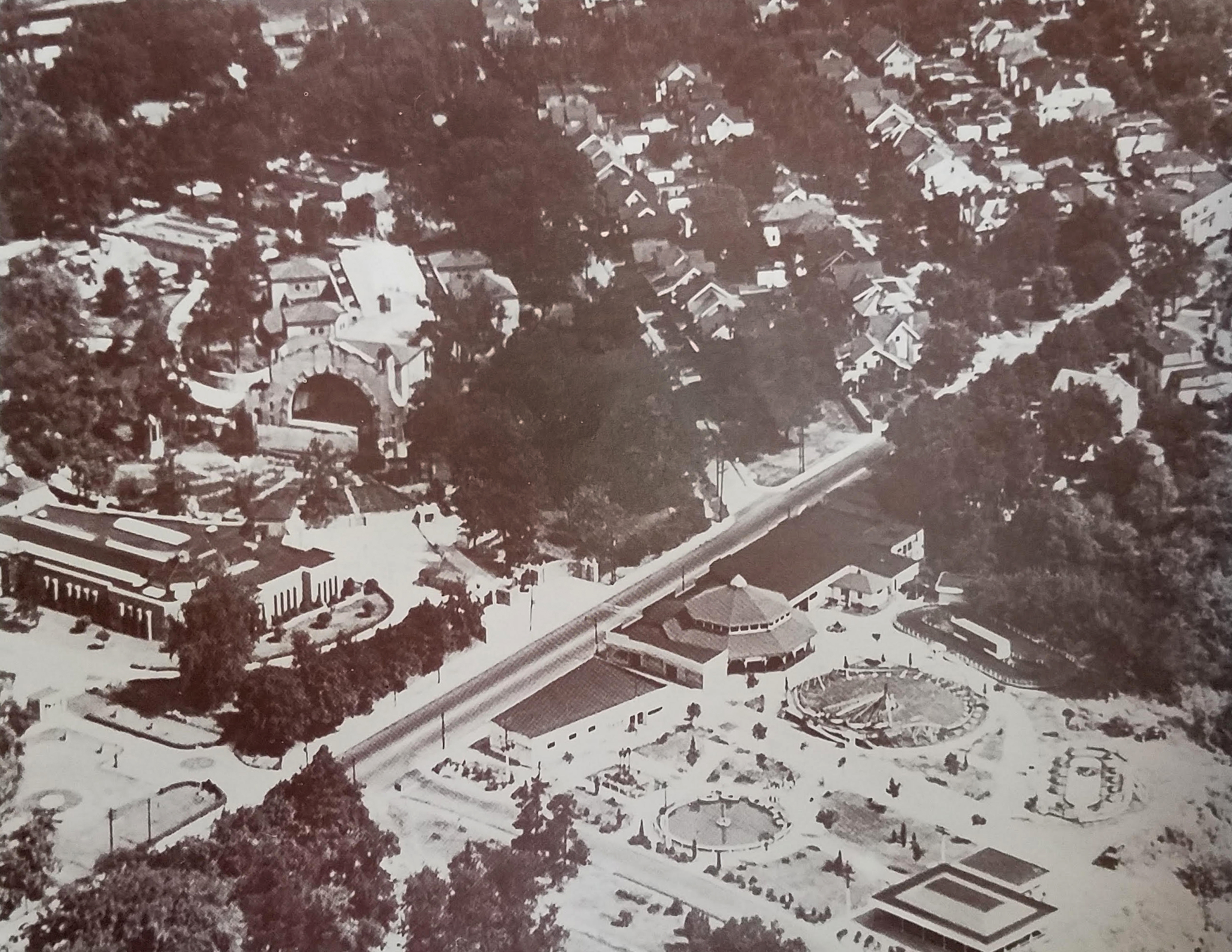The City of Toledo purchased lots in 1871 on the site of the current Walbridge Park for the first city owned park. It was called Lenk Park, and then in 1874, forty-seven additional acres were purchased on which the House of Refuge for Delinquent Boys was built. The House of Refuge burned down in 1886, but was not rebuilt. The following year the name was changed to Riverside Park.
The first bond issue for city parks was passed in 1891. After the purchase of more property, the size of the park was brought up to 62 acres. Riverside Park was changed to Walbridge Park in 1895, after Horace Walbridge who was actively involved in the development of Toledo’s park system. Greenhouses were built, land was drained, sidewalks, roads and bridges were built, and by the turn of the century, swimming and boating had become very popular activities at the park. Bath houses and pavilions were built on the islands, but were destroyed by ice the first winter, so they were replaced with portable structures afterward. Ott’s Boat Livery opened in 1898, offering rowboats and canoes for rent.
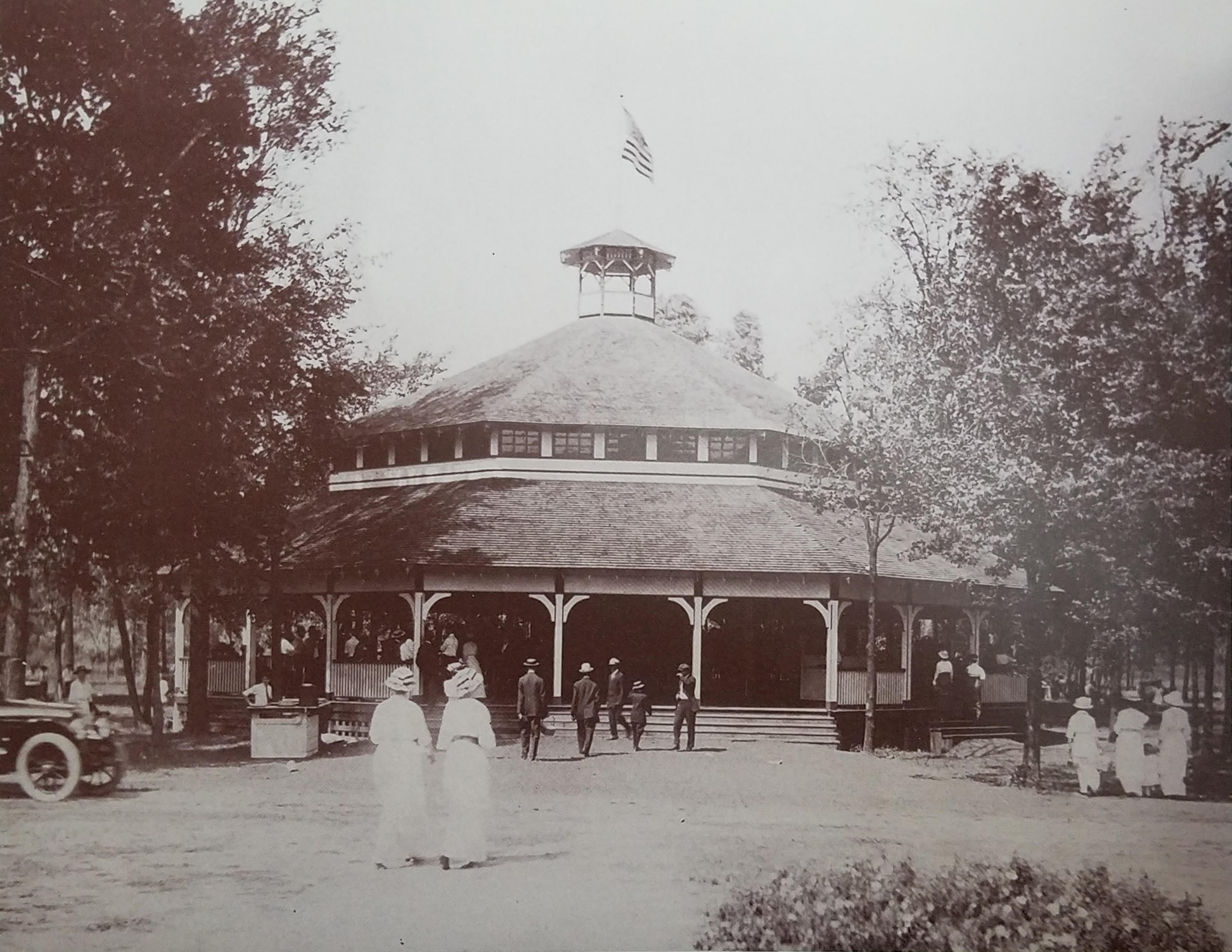
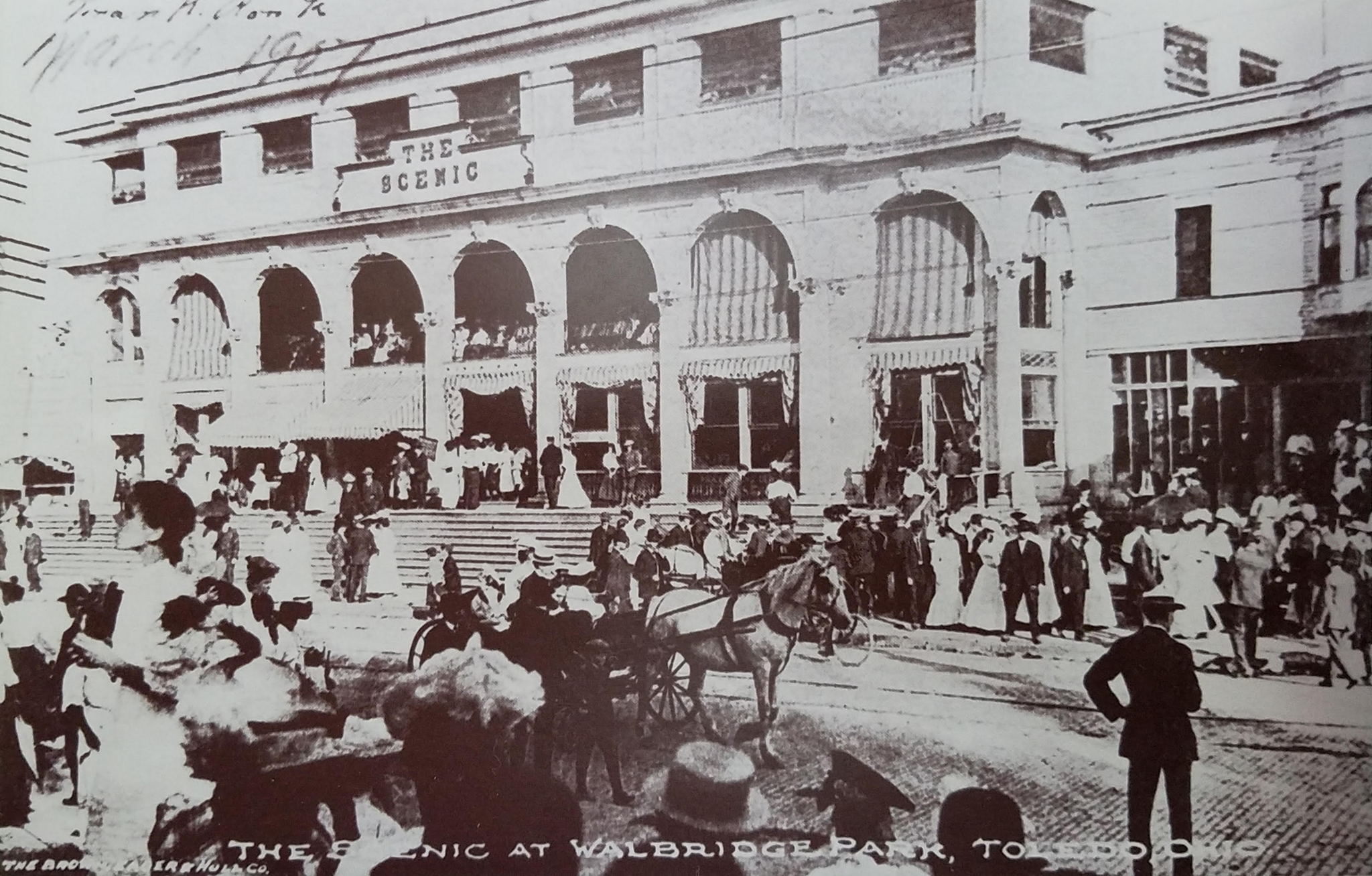
In 1899, a zoo was opened with a “bear” as the first attraction. The “bear” was actually a very rotund woodchuck, but it did start what has become The Toledo Zoo; and by 1911 there were 290 species of animals.
Maumee River Yacht Club opened in 1899, as did the Walbridge Park Amusement Center which was adjacent to the park and known initially as Walbridge Annex. The amusement center had a roller coaster, merry-go-round, the “Scenic” (casino), the “Toledo Nickelodeon” (silent movie house), penny arcade machines, a bowling alley, pool hall, candy and fruit stands, and a photo gallery. Over the years, a dance hall was built, different rides were added, and Walbridge Park was the most fashionable park in the city. A conservatory was built with large gardens as was a fountain, surrounded by a large pool which that was used as the home to the zoo’s sea lions.
The amusement park owned by T. M. Harton Company of Pittsburg was managed by Harry Covode, whose top priority was to operate a clean and safe park. He kept the park in good repair and never tolerated drunkenness or profanity. He was observed to jump onto the merry-go-round going at full speed and collared two young men who were shouting obscenities at young girls. He then escorted them off of the property immediately.
Streetcars ran to the park from downtown and there were many special events, as well as family outings sponsored by local businesses—which made Walbridge Park Toledo’s favorite park.
Islands opposite the park were purchased for the development of beaches, and by 1910 cruises were offered around Clark Island first on the Zelma, then on the Arawana I, and finally, the Arawana II. In the 1920’s, Park Week was celebrated throughout the city and people literally spent the week enjoying all of the city’s parks. The 4th of July was a day-long celebration at Walbridge Park, with swimming and boating races, amusement rides, the zoo, and fireworks in the evening.
In 1926, the city bought Clark and Delaware Islands, hoping to develop them in a manner similar to Detroit’s Belle Isle. But the expense was so great that this never came to fruition.
Walbridge Park remained very popular though the depression, and many improvements were made from 1935 to 1940 by the Works Projects Administration and National Youth Administration. These projects included many stone buildings, shelter houses, amphitheaters, and retaining walls—as well as lakes that were dug.
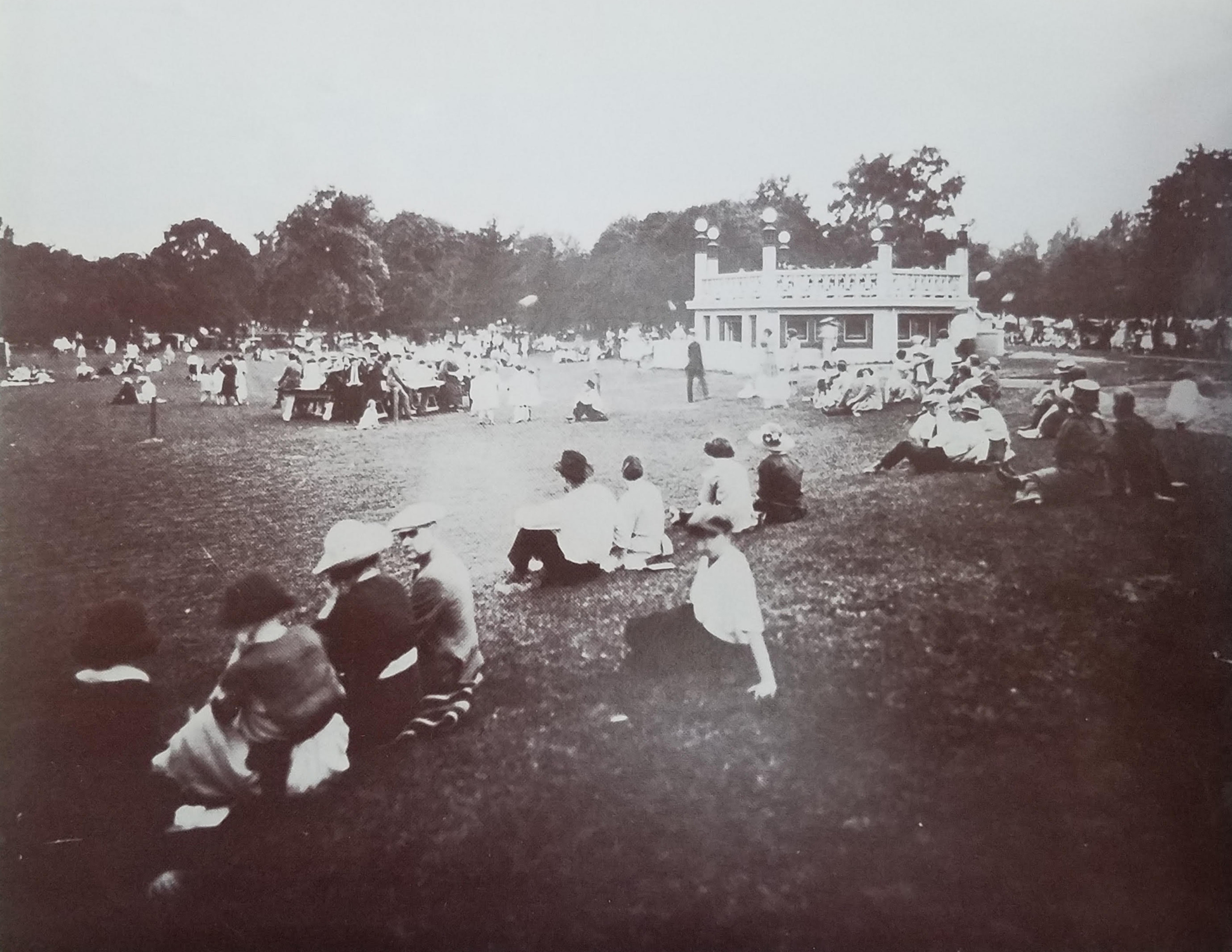
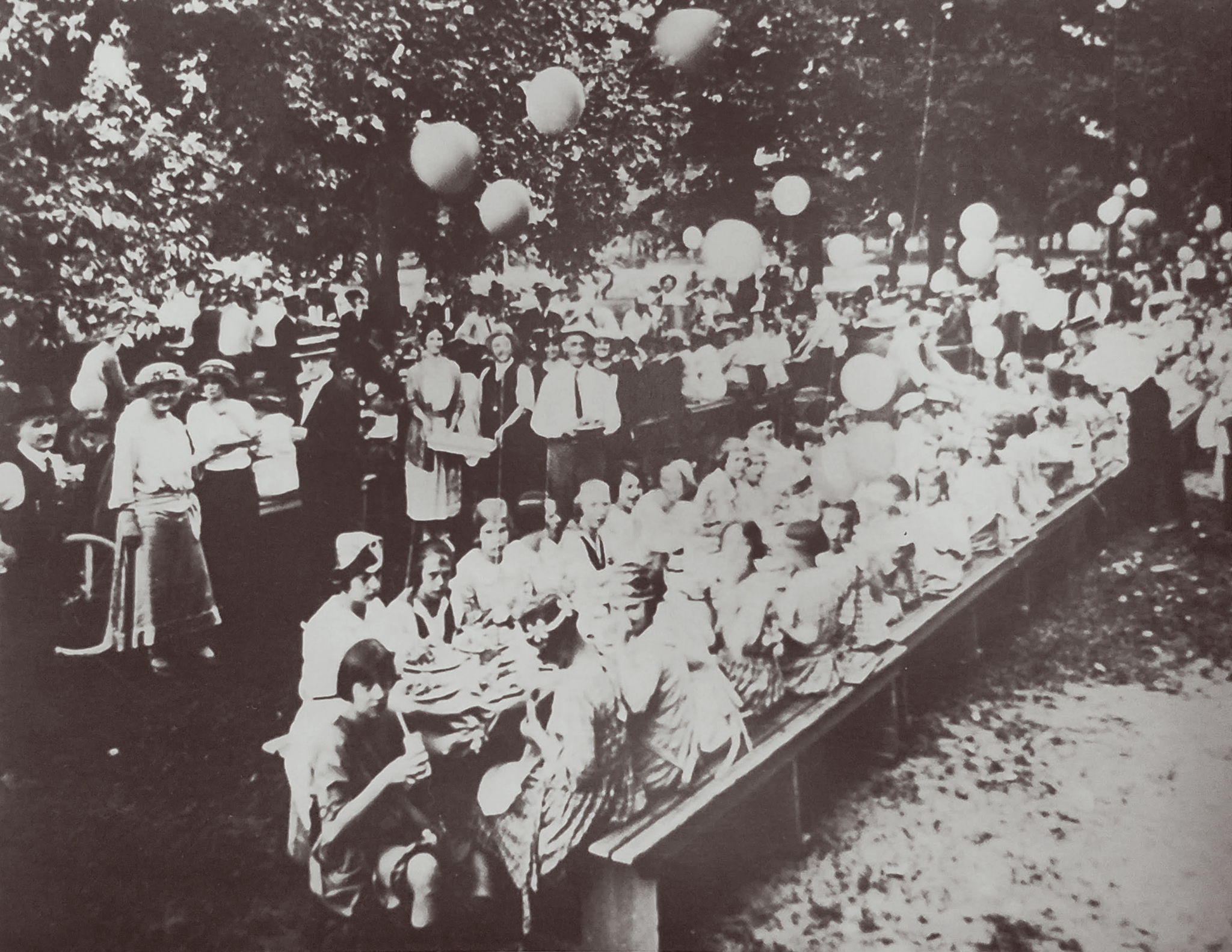
The Walbridge Park Amusement Center burned down in 1938, likely caused by burning leaves and high winds. At first, rebuilding was opposed by area residents due to the loud music, primarily of the merry-go-round, until a plan to direct the sound towards the river was agreed upon. When the park reopened in 1939, it did not resemble the old midway—having a more ‘modern’ look with different rides, as only the merry-go-round had survived the fire.
The park also remained very popular throughout World War II. It was a place to forget the turmoil and tragedies brought on by the conflict. Mr. Covode passed away suddenly in 1946, and others were brought in to manage the amusements. During that time new rides were added; old ones were replaced and there was a decline in maintenance. River beaches were considered unsafe and unhealthy, but lifeguards were continued because there were three to four ‘saves’ daily. Dredging of the river to maintain the shipping channel was being done, including the removal of some islands which made the river less attractive. In the 1950’s vandalism became a serious problem. 1957 was the last year that the amusements were open, and in 1959 much was demolished. What remained burned down in 1961.
The city of Toledo acquired the four and half acres that had been the amusement park to make most of it into a parking lot for the Toledo Zoo.
In 1972, Ott’s Boathouse closed after being in business for 74 years. By the 1980’s, city funds were lacking and the park was in serious disrepair. The park was nearly sold to a supermarket chain, but 500 residents united in protest and saved their park. From this event grew the formation of the Walbridge Park Advisory Board, a group of citizens who act as liaison between the neighborhood and city council on matters of park development and activities.
Since then over $1,000,000 have been invested in the park for renovations of the shelter house, outside shelter house, bandstand, elimination of roads to prevent drug trafficking, and replacement of the retaining walls overlooking the Maumee River.
The city of Toledo acquired the four and half acres that had been the amusement park to make most of it into a parking lot for the Toledo Zoo. In 1972, Ott’s Boathouse closed after being in business for 74 years. By the 1980’s, city funds were lacking and the park was in serious disrepair. The park was nearly sold to a supermarket chain, but 500 residents united in protest and saved their park. From this event grew the formation of the Walbridge Park Advisory Board, a group of citizens who act as liaison between the neighborhood and city council on matters of park development and activities.
Since then over $1,000,000 have been invested in the park for renovations of the shelter house, outside shelter house, bandstand, elimination of roads to prevent drug trafficking and replacement of the retaining walls overlooking the Maumee River.
